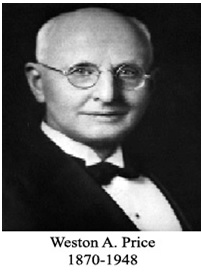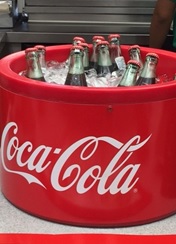Beyond Toothpaste
- Louise H Connolly MD
- Jan 18, 2018
- 9 min read
Fiji, Westin Price, and Your Mother
I recently went Scuba Diving in Fiji. A dental missionary group was staying in our resort, relaxing after cleaning and fixing many poor Fijian's teeth on the outer islands. Fijians have terrible problems with decay, and I found myself wondering why. So I asked dentist after dentist, most of them young brave spirited types, fresh from their charitable endeavors, just why the Fijians had such awful dental problems. The answer was instantaneous and uniformly the same: they never learned to brush or floss. After hours of cleaning and fixing hundreds of mouths, each islander was supplied with - you guessed it. A toothbrush and toothpaste.
This was NOT the answer I was looking for. I really doubt that dental caries spring from a heretofor undiagnosed toothpaste deficiency. In fact, toothpaste was only invented in the 1920's, and the first container was a small jar. Not one of the dentists were familiar with Westin Price, not one pointed to the obvious root cause of dental caries - poor diet. If you further search for causes of periodontal disease, similar results come up - smoking, drinking too much alcohol, poor diet, diabetes and stress. I know the stress part well - my first cavity appeared during my OBGYN county hospital internship. I had another 5 and a crown by the time I graduated 4 years later. Then I've had none since.
Think about your own mouth , your stress levels over the years, your diet and habits. Of course this is true! You just forgot. Stress, alcohol, sugar. Candy causes cavities. So do diet coke, french fries, happy meals, bread, chips, and ice cream. It's everything white and grey, everything is a package, everything through a fast food window. That's the cause of poor oral health. Not a toothpaste deficiency. At any rate, I'm a doctor, and what do doctors preach? Diet.... So there. And, by the way, I do brush my teeth.
Back to Westin Price. He was a Canadian dentist born a half century before the invention of toothpaste. He is known primarily for this research on the relationship between oral health, nutrition, and physical health. Now wait a minute, Isn't that what we should be talking about here? Oral Health, Nutrition, Physical Health. What a concept.
Westin A Price 1870-1948 OH NO! Native Girl B-4 Western Diet
Dr Price founded the National Dental Association which became the research branch of the American Dental Association. He served as chairman from 1914 to 1928. His famous book, Nutrition and Physical Degeneration, chronicles the degeneration of oral palates and teeth when indigenous tribes were exposed to modern diets. His research took the next 10 years of his life and included meticulously documented examinations of hundreds of tribes around the world - he took tens of thousands of photographs, Xrays, lithographs, and documents. All are preserved by the Price Pottinger Foundation. His first conclusion after studying both living tribal members and skeletons from past eras, was that there were more dental cavities between 1830 and 1930 then were found in any previous 1,000 year period in human history. He began to search out just what was missing in the modern diet. Then he began experimenting and treating oral disease with diet.
Aside from avoiding the nutritionally bereft fast food culprits of the Western World, did Dr Price find anything specific food which could ameliorate our oral health? Yes! He found that one missing factor in even relatively good modern diets was the lack of organ meats. And the most essential organ meat of all was liver. When I was growing up, my mother used to serve us liver and onions once a week. If we didn't eat it, we would be treated with a spoonful of Cod Liver Oil and sent to bed early. Now Westin Price started treating caries with liver but soon moved on to Cod Liver Oil. Exceptional results were found with Cod Liver Oil given three times a day. What was it in the cod liver oil swished around in the mouth that helped? Well, it was the Vitamin A, the Vitamin D in an oil base. ( More on the oil base and oil pulling later) But Westin Price found that something was missing. He began to use high butterfat butter oil which contained the mysterious Activator X. 50 years later scientists discovered that Activator X was really Vitamin K2.
Here's a little more about how Vitamin A, Vitamin D and Vitamin K2 work in the mouth. They increase the growth and mineralization of dentin and enamel. Now there are three calcified tissues of the teeth: the cementum forms the roots, the enamel forms the surface, and the dentin forms the support structures inbetween. Cells called odontoblasts lining the surface of the pulp just beneath the dentin continually produce new dentin material. If a cavity invades the dentin and reaches these cells they can die. Then please go to your dentist and do what she says! But if an early cavity has eroded only the enamel and into the dentin, perhaps Dr Price's 80 y/o discoveries can work for you.
Back to physiology: Dentin is unique among the tissues of the teeth for its expression of osteocalcin, and Matrix Gla Protein (MGP). Both are Vitamin K2 dependent proteins which direct the deposition of calcium and phosphorous salts into teeth and bone. Thus you remineralize your teeth and don't build up plaque. K2 dependent proteins do both - more dentin and enamel, less gingivitis and plaque. This same Vitamin K2 acts to remineralize bone in osteoporosis while preventing calcified arterial plaque in your coronary arteries. Vitamins A and D signal odontoblasts to produce osteocalcin, and probably regulate their expression of MGP as well. After vitamin K2 activates things (through MGP and OC), the tooth can bind calcium, and lay down the mineral-rich matrix to repair dentin and enamel.
Simply put: Use Vitamin A,D, and K2 to help prevent osteoporosis, cardiovascular disease, and improve your oral health. Or, as my mother would say - eat your liver and onions. There is a remarkable restorative synergy between these three fat soluble vitamins - A,D,K2.
For more on Westin Price, please visit the website, www.westonaprice.org/ He not only inspired Royal S Lee to start Standard Process, he is one of the true founders of the Paleo Movement.
In functional medicine circles, there is the eternal debate about the relationship between oral health and overall bodily health. But where is the arrow of causation? What causes what? The answer to that question is far from clear. Does poor dental hygiene lead to systemic inflammation and thus cause disease? Perhaps. Proponents point to the existence of p gingivalis (a pathogenic bacteria found in the mouth) also found in coronary heart plaque. I've met dentists who firmly believe that absence of cavities and gum disease must certainly prolong life. But what if the mouth is just a canary in the coal mine? What if the mouth only reflects the disease present deep within the body? The relationship is complex. My take is that influence proceeds both ways. And Westin Price was spot on. Nutrition, Oral Health, and Physical Health are related. And the relationship is complex.

Let's talk about acids in the mouth. Even good for you acids. For example, having a glass of lemon water when you get out of bed in the morning is a common practice in intermittent fasting. But sucking on a lemon all day can demineralize your front teeth. I won't even talk about apple cider vinegar. Acids destroy enamel making teeth vulnerable. Then, of course, there is the coffee or tea I am drinking. Both acetic and staining. Want to know what your salivary PH is? Why don't you just test it with a PH paper? Easy enough. But not very specific. What about acid reflux? That can certainly demineralize back teeth. And yes, acid reflux is certainly related to a bad diet. With bad acid reflux the dentist can even tell what side you sleep on. So what is happening here? Simply put, the acids feed the bad bacteria, then the minerals in saliva are used up in tartar formation which traps and inactivates the acid and the bacteria. Then the minerals are not available to repair enamel.
Does it matter what type of bad bacteria you have in your mouth? Probably, but this is incompletely worked out. Now, I have run across expensive cultures you can buy which will give you a print out of just what bacteria exist in your mouth. I don't recommend them. The problem is, what are you going to do with the results? There is no data on treating specific pathogenic bacteria in the mouth with different antibiotics. Besides, the few antibiotics used to promote oral health don't work very well. Why? They don't get deep enough, even those inserted under your gums. They don't disrupt biofilms, they aren't tailored to individual bacteria. Antiseptic mouth washes have similar problems. We really don't want to kill all the bacteria in the mouth. We want to keep the good guys.

A shelf in Sprouts: Xylitol (Spry) Gum, Herbal PerioRub, & Oil Pulling
Speaking about good mouth bacteria, here's my take on oral probiotics. A number of trials, both observational and clinical, have shown that supplementation with probiotics can reduce cavities and improve overall oral health by rebalancing the bacteria in the mouth. But they are small short term studies. So oral probiotics get a MAYBE in my book. Then there is the question of exactly which species and subspecies to use, duration of use, vehicle used to introduce them, etc. Lozenges, gums, liquids. And yes there are many companies out there trying to find the magic formula. Probiotics are big money these days, so I expect the already burgeoning market to grow. There are tantilizing special probiotic rinses, in a variety of luscious flavors that you can swish and spit daily. All for a price.
These MIGHT be beneficial, especially with a change in diet. If you put them in your mouth, you do have to feed them, or any effect will just be transient. They are best introduced with prebiotics, their natural food and environs. Fermented foods are perfect - food, for us and food for them, with happy fermenters munching their way all the way down. Fermented cheese, and kefir even contain Vitamin K2. Eat foods that beneficial oral bacteria like to eat and you'll change your oral microbiome naturally.
Xylitol is one natural product which is really worth considering. Unlike traditional antiseptic mouth washes, or oral antibiotics which indiscriminately kill oral flora, xylitol selectively kills the pathogenic acid producers. It leaves the good guys alone. It's a derivative of birch or beechwood. It inhibits growth of strep mutans, the cavity producing oral bacteria, increases saliva production and raises salivary PH. This wonderful combination of activities decreases both cavities and plaque formation. Xylitol is available in toothpaste, in mints, gummies, chewing gums, lollipops and mouth rinses. So, what's right for you? That depends. The longer the xylitol stays in your mouth, the better. So if you brush your teeth for 30 seconds but chew gum for one half hour, then please use the gum. But maybe a long lasting mint or lozenge is more to your taste. Dose is also important. Optimal effects are found at around a total of 6 grams of xylitol a day in divided doses. Strep mutans isn't the only bacteria inhibited. And xylitol has beneficial effects on all those structures surrounding the mouth. So, for example Xylitol inhibits H pylori, a prime causitative agent in GERD, it also helps clear up sinusitis and ear infections. In choosing xylitol products, look out for added ingredients which may be harmful. Then look at Xylitol dose.
Speaking of your mother, (Weren't we blaming her for everything?). Her nutrition during pregnancy has everything to do with your oral health. You inherit your gut microbiome from her both during the third trimester, during the birth process, and your first year of life. The placenta acts more like a sieve than a barrier. Starting at 7 months, bacteria are leaked across the placenta to the fetus. The 7th month placental microbiome resembles the inhabitants of the maternal small intestine. The term placental microbiome resembles the maternal mouth. Chewing xylitol gum at term is related to less cavities in the growing infant. Then, of course, breast feeding further improves things.

Oil pulling, to me, is very interesting, and time honored tradition, again with limited modern validation. There certainly are a lot of anecdotes though! The practice is hundreds of years old, and experiencing a recent dramatic increase in popularity. Here we go again. What is it about swishing oil around in the mouth - be it Cod Liver Oil from Westin Price, Eucalyptus Oil in Listerine, or sesame oil from Aryuveda? Why might it work? First of all, oil and water don't mix. And oral bacteria have a lipid (oil) soluble outer membrane. Like attracts like, so an oil will pull the bacteria out with it. Sesame oil is rich in calcium and anti-inflammatory compounds such as sesamin but does not contain Vitamins A, D, or K. Eucalyptus Oil has antibacterial properties. Cod Liver Oil tastes terrible. But regardless of it's other properties, the bacteria will tend to flow with the oil and leave the watery saliva and the water soluble minerals in place. Saliva supplies the K2 and voila! the calcium and minerals adhere to the tooth.
Another possible mechanism is that 20 minutes of swishing oil or anything around in your mouth generates a lot of saliva. Almost anything that increases saliva in your mouth improves dentition. The opposite is also true. Dehydration decreases saliva production. So many young endurance athletes suffer poor oral health as a result of dehydration Mouth breathing also dries you out. Natural ways to increase saliva production first focus on increased hydration. With water. Then camomille, nutmeg, ginger and green tea can increase saliva production. But simple chewing also works. Indeed, most of the research on saliva was originally funded by the Wrigley foundation: Wrigley Spearmint Gum! Back to oil pulling Serious advocates do this for 20 minutes twice a day, swishing the oil around and between teeth the way no gum will ever do. Then the mixture is spit out in the trash. Coconut Oil is frequently substituted for sesame oil. Single use coconut pulls are easily made with a mixture of oil, water, and a mini-ice tray. For details, go to Wellnessmama.com.
That's It ! I'll leave you with another Fiji picture. This is a traditional Fijian feast.

Pork, Chicken, Cassava and Tarot
LHC MD














Comments